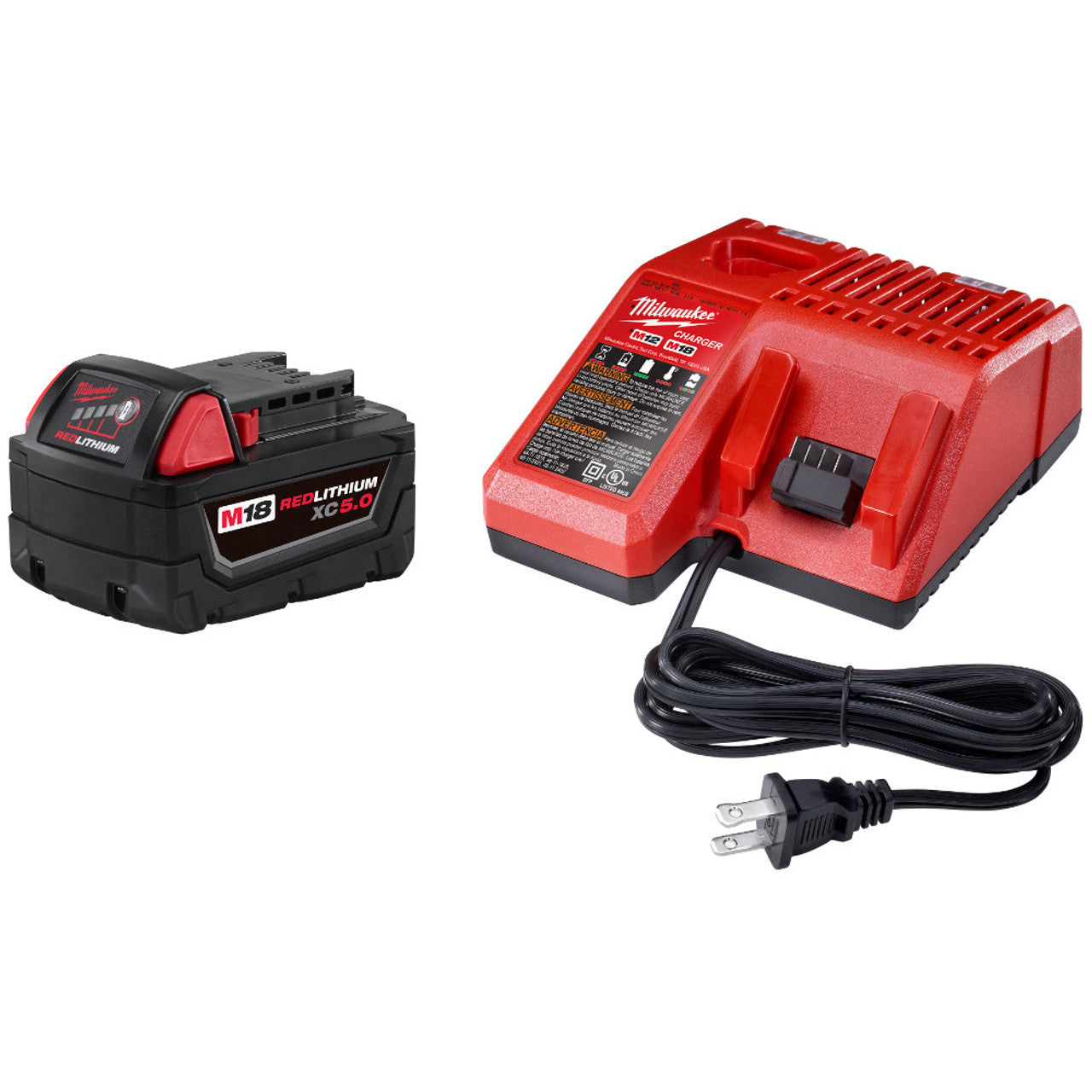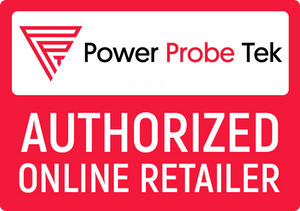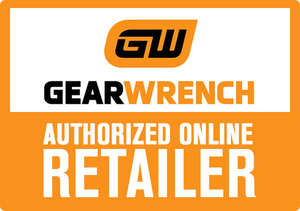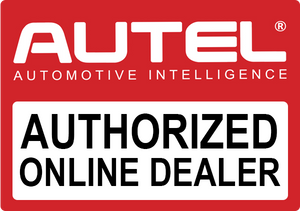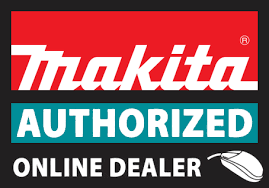Whether you're a seasoned car enthusiast or a new driver eager to take care of your ride, one thing remains constant: the importance of regular maintenance.
Keeping your car in peak condition not only ensures a smooth and safe drive but also extends the life of your vehicle, saving you money in the long run.
Enter the car maintenance checklist, an essential tool for any car owner committed to preserving the health and performance of their vehicle.
By following a comprehensive checklist, you can catch minor issues before they become major problems, enhance your car's efficiency, and maintain its aesthetic appeal.
In this article, we'll guide you through the key components of an effective car maintenance checklist, offering expert tips and insights along the way.
From routine inspections and seasonal adjustments to knowing when to call in the professionals, these essential tips will empower you to keep your car running like new.
So, buckle up and get ready to dive into the world of car care!
Understanding the Importance of a Car Maintenance Checklist
Keeping your car in excellent condition requires more than just filling up the tank and going through the occasional car wash. Regular maintenance is key to ensuring your vehicle performs optimally and remains safe on the road.
A comprehensive car maintenance checklist is an invaluable tool for any car enthusiast, helping you stay organized and proactive in addressing potential issues.
Why Maintenance Matters
Routine maintenance offers numerous benefits that go beyond simply keeping your car running. As Medium puts it,
“Your car is one of the biggest investments in your life”.
Here are some reasons why a car maintenance checklist is essential:
- Improved Safety: Regularly checking and maintaining critical components like brakes, tires, and lights can prevent accidents and keep you and your passengers safe.
- Enhanced Performance: Keeping your engine, transmission, and other mechanical parts in good condition ensures your car runs smoothly and efficiently.
- Cost Savings: Identifying and addressing minor issues early can prevent them from developing into costly repairs. Proper maintenance also extends the lifespan of your vehicle, saving you money in the long run.
- Resale Value: A well-maintained car holds its value better, making it more attractive to potential buyers if you decide to sell.
Avoiding Common Pitfalls
Even the most passionate car enthusiasts can fall into common maintenance traps. Here are a few mistakes to avoid:
- Skipping Scheduled Maintenance: Ignoring regular service intervals can lead to significant issues down the road. Always follow the manufacturer’s recommended maintenance schedule.
- Overlooking Fluid Checks: Low or dirty fluids can cause damage to your car’s engine and other components. Regularly check and top off fluids like oil, coolant, and brake fluid.
- Neglecting Tire Care: Incorrect tire pressure or worn-out tires can affect your car’s handling and fuel efficiency. Regularly inspect your tires for wear and maintain proper pressure.
- Ignoring Warning Lights: Dashboard warning lights are your car’s way of communicating issues. Don’t ignore them—investigate and address the underlying problems promptly.
Essential Components of a Car Maintenance Checklist
Creating a thorough car maintenance checklist is essential for keeping your vehicle in top condition. This checklist should cover regular inspections and routine maintenance tasks, ensuring that no component is overlooked.

Regular Inspection Items
- Fluid Levels
- Engine Oil: Check the oil level and quality regularly, and change it according to the manufacturer’s recommendations.
- Coolant: Ensure your coolant is at the proper level and replace it as needed to prevent overheating.
- Brake Fluid: Regularly inspect the brake fluid level and top it off to maintain optimal braking performance.
- Transmission Fluid: Check the transmission fluid level and condition to ensure smooth shifting.
- Windshield Washer Fluid: Keep this fluid topped up for clear visibility during adverse weather conditions.
- Tire Health
- Pressure: Regularly check tire pressure and adjust it to the recommended level for optimal fuel efficiency and handling.
- Tread Depth: Inspect the tread depth to ensure it meets safety standards, and replace tires if they are worn out.
- Alignment: Have your alignment checked regularly to prevent uneven tire wear and improve handling.
- Brakes
- Brake Pads and Rotors: Inspect brake pads for wear and rotors for damage. Replace them as needed to ensure safe stopping power.
- Brake Lines: Check for any leaks or damage in the brake lines.
- Battery
- Health and Terminals: Test the battery’s charge and clean any corrosion from the terminals to ensure reliable starting.
- Lights and Wipers
- Headlights and Taillights: Ensure all lights are working properly and replace any burnt-out bulbs.
- Windshield Wipers: Inspect wiper blades for wear and replace them to ensure clear visibility during rain.
Routine Maintenance Tasks

- Oil and Filter Changes
- Change the engine oil and oil filter at the intervals recommended by the vehicle manufacturer to keep the engine running smoothly.
- Air Filter Replacement
- Replace the air filter regularly to ensure the engine receives clean air, improving performance and fuel efficiency.
- Spark Plugs and Ignition System
- Check and replace spark plugs as needed to maintain efficient ignition and engine performance.
- Belts and Hoses
- Inspect belts and hoses for signs of wear, cracks, or leaks. Replace them to prevent breakdowns.
- Suspension and Steering
- Check for issues in the suspension and steering components to ensure a smooth and stable ride.
| COMPONENT | TASK | FREQUENCY |
|---|---|---|
| Fluid Levels | ||
| Engine Oil | Check level and quality; change as recommended | Regularly, as per manufacturer's schedule |
| Coolant | Check and top off; replace as needed | Regularly |
| Brake Fluid | Inspect level and top off | Regularly |
| Transmission Fluid | Check level and condition | Regularly |
| Windshield Washer Fluid | Keep topped up | Regularly |
| Tire Health | ||
| Pressure | Check and adjust to recommended levels | Regularly |
| Tread Depth | Inspect for wear; replace if necessary | Regularly |
| Alignment | Have checked to prevent uneven wear | Regularly |
| Brakes | ||
| Brake Pads and Rotors | Inspect for wear and damage; replace as needed | Regularly |
| Brake Lines | Check for leaks or damage | Regularly |
| Battery | ||
| Health and Terminals | Test charge and clean corrosion | Regularly |
| Lights and Wipers | ||
| Headlights and Taillights | Ensure all lights function; replace burnt-out bulbs | Regularly |
| Windshield Wipers | Inspect for wear; replace as needed | Regularly |
| Routine Maintenance | ||
| Oil and Filter Changes | Change oil and filter as per manufacturer’s schedule | As recommended |
| Air Filter Replacement | Replace regularly for optimal performance | Regularly |
| Spark Plugs and Ignition | Check and replace spark plugs if needed | Regularly |
| Belts and Hoses | Inspect for wear or cracks; replace as needed | Regularly |
| Suspension and Steering | Check for issues to ensure smooth ride | Regularly |
Seasonal Maintenance Considerations
As the seasons change, so do the demands on your vehicle. Preparing your car for different weather conditions is essential to ensure safety, performance, and longevity.
Incorporating seasonal maintenance into your car maintenance checklist will help you stay ahead of potential issues and keep your vehicle running smoothly year-round.
Preparing for Winter
Winter can be particularly harsh on cars, with cold temperatures, ice, and snow posing significant challenges.
Here are some key maintenance tasks to prepare your vehicle for winter:
- Antifreeze Levels: Ensure your coolant system is filled with the appropriate antifreeze mix to prevent the engine from freezing.
- Winter Tires: Consider switching to winter tires for better traction on icy or snowy roads. Check tire pressure regularly, as it can drop in colder temperatures.
- Battery Health: Cold weather can reduce battery performance. Test your battery’s charge and replace it if necessary to avoid unexpected breakdowns.
- Windshield Wipers and Fluid: Install winter wiper blades and fill your washer fluid reservoir with a formula designed to resist freezing.
- Brakes: Ensure your brakes are in top condition, as icy roads require optimal stopping power.
- Emergency Kit: Equip your car with an emergency kit, including items like a blanket, flashlight, ice scraper, and first-aid supplies.
|
WINTER MAINTENANCE |
|
|
Task |
Description |
|
Antifreeze Levels |
Ensure coolant system is filled with the correct antifreeze mix to prevent freezing |
|
Winter Tires |
Switch to winter tires for better traction on icy/snowy roads; check pressure regularly |
|
Battery Health |
Test battery charge and replace if needed to avoid breakdowns in cold weather |
|
Windshield Wipers and Fluid |
Install winter wiper blades; use washer fluid designed to resist freezing |
|
Brakes |
Ensure brakes are in top condition for optimal stopping power on icy roads |
|
Emergency Kit |
Equip car with an emergency kit, including a blanket, flashlight, and ice scraper |
Summer Maintenance Tips
Hot weather also presents unique challenges for your vehicle. Here are some tips to help your car handle the heat:
- Cooling System: Check your radiator and hoses for leaks, and ensure your coolant levels are adequate to prevent overheating.
- Air Conditioning: Test your air conditioning system to ensure it’s functioning properly. Consider having it serviced if it’s not cooling efficiently.
- Tire Maintenance: Hot pavement can increase tire wear. Check for signs of wear and ensure your tires are properly inflated.
- Engine Oil: High temperatures can affect oil viscosity. Make sure you’re using the correct oil grade for summer driving conditions.
- Battery Care: Heat can be as damaging to batteries as cold. Check your battery for signs of corrosion and clean the terminals if necessary.
- Interior Protection: Use sunshades and apply UV protection to your dashboard and seats to prevent sun damage and fading.
| SUMMER MAINTENANCE | |
| Task | Description |
| Cooling System | Check radiator and hoses for leaks; ensure adequate coolant levels to prevent overheating |
| Air Conditioning | Test AC system; service if not cooling efficiently |
| Tire Maintenance | Check for wear and ensure proper inflation to withstand hot pavement |
| Engine Oil | Use correct oil grade for summer conditions; check oil levels |
| Battery Care | Inspect battery for corrosion; clean terminals if needed |
| Interior Protection | Use sunshades and apply UV protection to dashboard and seats to prevent sun damage |
Tools and Equipment for DIY Car Maintenance

Having the right tools and equipment at your disposal is crucial for effectively maintaining your car.
Whether you're a seasoned DIY enthusiast or just starting, equipping your garage with these essential tools will make routine maintenance tasks more manageable and efficient.
Basic Tools
- Wrench Set: A set of open-end, box, and socket wrenches will allow you to tackle a wide range of maintenance tasks, from tightening bolts to changing oil filters.
- Screwdriver Set: Both flathead and Phillips screwdrivers are essential for tasks such as changing air filters and removing interior panels.
- Pliers: Needle-nose and regular pliers are versatile tools for gripping, twisting, and cutting wires and hoses.
- Jack and Jack Stands: A hydraulic jack and jack stands are necessary for safely lifting your car when performing tasks like tire changes and brake inspections.
- Tire Pressure Gauge: Regularly checking tire pressure ensures proper inflation, improving fuel efficiency and safety.
- Oil Filter Wrench: This specialized tool makes it easy to remove and replace oil filters during oil changes.
Advanced Tools
- OBD-II Scanner: This diagnostic tool plugs into your car's OBD-II port to read error codes, helping you identify and address engine issues.
- Torque Wrench: A torque wrench ensures that bolts and nuts are tightened to the manufacturer's specifications, preventing over-tightening or under-tightening.
- Multimeter: Useful for diagnosing electrical issues, a multimeter measures voltage, current, and resistance.
- Battery Charger: A battery charger allows you to recharge a dead battery or maintain battery charge during periods of inactivity.
- Brake Bleeder Kit: This tool helps you bleed air from your brake lines, ensuring optimal brake performance.
- Creeper: A creeper is a low-profile platform with wheels that makes it easy to slide under your car for inspections and repairs.
Safety Equipment
- Gloves: Wearing gloves protects your hands from sharp edges, chemicals, and dirt.
- Safety Glasses: Protect your eyes from debris and chemicals during maintenance tasks.
- Fire Extinguisher: Keep a fire extinguisher in your garage to handle any unexpected fires during maintenance work.
When to Call in the Professionals

While DIY car maintenance can be rewarding and cost-effective, there are times when professional expertise is necessary.
Knowing when to seek help from a qualified mechanic can prevent further damage to your vehicle and ensure that repairs are done correctly.
Complex Repairs
- Transmission Issues: Diagnosing and repairing transmission problems often requires specialized knowledge and equipment. If you notice slipping gears, unusual noises, or difficulty shifting, it's best to consult a professional.
- Engine Overhauls: Major engine repairs, such as rebuilding or replacing parts, involve intricate procedures and precision. Professionals have the expertise to handle these tasks and ensure the engine performs optimally.
- Electrical Problems: Modern vehicles have complex electrical systems. Issues with the electrical system, such as malfunctioning sensors or wiring problems, can be challenging to diagnose and repair without professional tools and experience.
Safety Concerns
- Brake System Repairs: The braking system is crucial for safety. If you experience issues like grinding noises, reduced braking power, or spongy brakes, it's important to have a professional inspect and repair the system to ensure safe operation.
- Suspension Repairs: The suspension system affects your car's handling and ride comfort. If you notice uneven tire wear, steering problems, or excessive bouncing, a professional can diagnose and address suspension issues.
- Air Conditioning Repairs: If your air conditioning system is not cooling properly or making unusual noises, a professional can service the system, check for leaks, and recharge the refrigerant.
Routine Services
- State Inspections and Emissions Testing: Many regions require regular state inspections and emissions testing to ensure vehicles meet safety and environmental standards. Professionals are equipped to perform these tests and handle any necessary repairs.
- Advanced Diagnostics: While OBD-II scanners can provide error codes, a professional mechanic can interpret these codes and perform comprehensive diagnostics to identify underlying issues.
Uncertain Repairs
- Unfamiliar Symptoms: If you're unsure about the cause of unusual noises, vibrations, or warning lights, seeking professional advice can prevent misdiagnosis and potential damage.
- Lack of Tools or Experience: For repairs or maintenance tasks that require specialized tools or techniques you're not familiar with, it's best to rely on professionals who have the necessary skills and equipment.
Tips for Maintaining Car Aesthetics
Keeping your car looking great not only enhances its appearance but also helps maintain its value. Proper care of both the exterior and interior will ensure your vehicle remains attractive and enjoyable to drive.

Exterior Care
- Regular Washing
- Frequency: Wash your car every 1-2 weeks to remove dirt, grime, and road salt that can damage the paint.
- Method: Use a mild car wash soap and a soft sponge or microfiber cloth to avoid scratching the paint. Rinse thoroughly and dry with a clean towel to prevent water spots.
- Waxing
- Purpose: Waxing provides a protective layer over your car’s paint, shielding it from UV rays, pollutants, and contaminants.
- Frequency: Apply wax every 3-4 months to maintain a glossy finish and protect the paint. Choose a high-quality carnauba or synthetic wax for optimal results.
- Method: Apply wax in a cool, shaded area using a foam applicator, following the manufacturer’s instructions. Buff to a shine with a microfiber cloth.
- Paint Protection
- Types: Consider using paint protection films or ceramic coatings for added protection against scratches, stains, and environmental damage.
- Application: Follow the product’s instructions for application. Professional installation may be recommended for more advanced protection options.
- Window and Trim Care
- Windows: Clean windows with a glass cleaner and a microfiber cloth to ensure a streak-free finish. Regular cleaning improves visibility and the appearance of your vehicle.
- Trim: Use trim-specific products to clean and protect exterior plastic and rubber parts, preventing fading and cracking.
Interior Maintenance
- Regular Cleaning
- Upholstery: Vacuum seats, carpets, and floor mats regularly to remove dirt and debris. For fabric seats, use a suitable upholstery cleaner. For leather seats, use a leather cleaner and conditioner to maintain softness and prevent cracks.
- Dashboard and Console: Wipe down surfaces with a damp cloth and mild cleaner. Use a detailing brush to reach into crevices and remove dust.
- Protecting Surfaces
- Floor Mats: Use rubber or all-weather floor mats to protect the carpet from spills and stains. Clean mats regularly to maintain their appearance.
- Sun Protection: Use sunshades to protect your dashboard and seats from UV damage and prevent fading.
- Odor Removal
- Air Fresheners: Use air fresheners or odor eliminators to keep the cabin smelling fresh. Avoid using too many at once to prevent overwhelming scents.
- Deep Cleaning: For persistent odors, consider using an ozone generator or professional detailing services to remove them.
- Preserving Interior Components
- Leather Care: Regularly apply leather conditioner to prevent drying and cracking.
- Plastic and Vinyl: Use protectants designed for plastic and vinyl surfaces to prevent fading and maintain a like-new appearance.
Your Ultimate Car Maintenance Guide: Keeping Your Ride in Top Shape

Maintaining your vehicle is more than just a checklist of tasks—it's a commitment to ensuring your car stays reliable, safe, and looking its best.
By following a comprehensive car maintenance checklist, you can enjoy a smoother, safer driving experience and preserve the value of your vehicle.
Key Takeaways
- Routine and Seasonal Care: Consistent attention to routine maintenance tasks, such as checking fluids, tires, and brakes, coupled with seasonal adjustments, ensures that your car is prepared for any weather condition.
- Essential Tools: Equipping your garage with the right tools enables you to tackle a variety of maintenance tasks effectively. From basic hand tools to advanced diagnostic equipment, having the right gear makes car care more manageable.
- Professional Assistance: Recognizing when to seek professional help is crucial for complex repairs and safety concerns. Mechanics have the expertise and equipment necessary to handle intricate issues and ensure your car operates at its best.
- Aesthetic Maintenance: Keeping both the exterior and interior of your car in top condition not only enhances its appearance but also protects its value. Regular washing, waxing, and interior care will keep your vehicle looking and feeling great.
Your One-Stop Shop for Car Maintenance
At MPR Tools & Equipment, we understand the importance of having the right tools for maintaining and enhancing your vehicle.
That’s why we offer a carefully curated selection of top-quality automotive tools and equipment designed to meet the needs of both DIY enthusiasts and professional mechanics.
Enjoy personalized customer service, free shipping on orders over $150, and free tools for orders over $400. Plus, benefit from our one-year Price Match Guarantee and a 30-day money-back guarantee.
Explore our catalog today to find the perfect tools for your car maintenance and enhancement needs, and experience the difference of working with equipment that meets the highest standards.
Happy Tinkering!
Sources:
https://medium.com/@autoladysynergy/5-reasons-why-vehicle-maintenance-is-important-4792f4f84264

